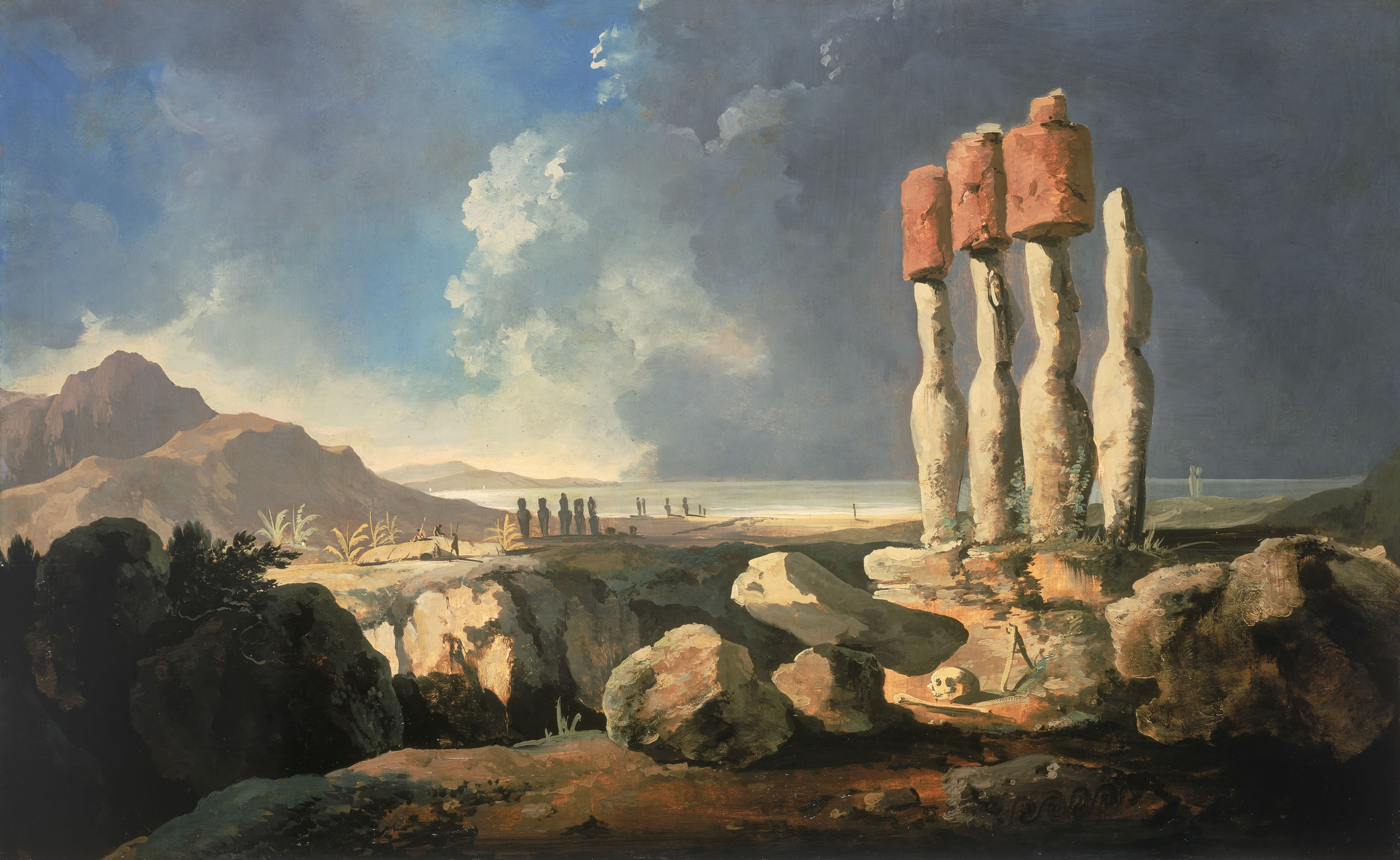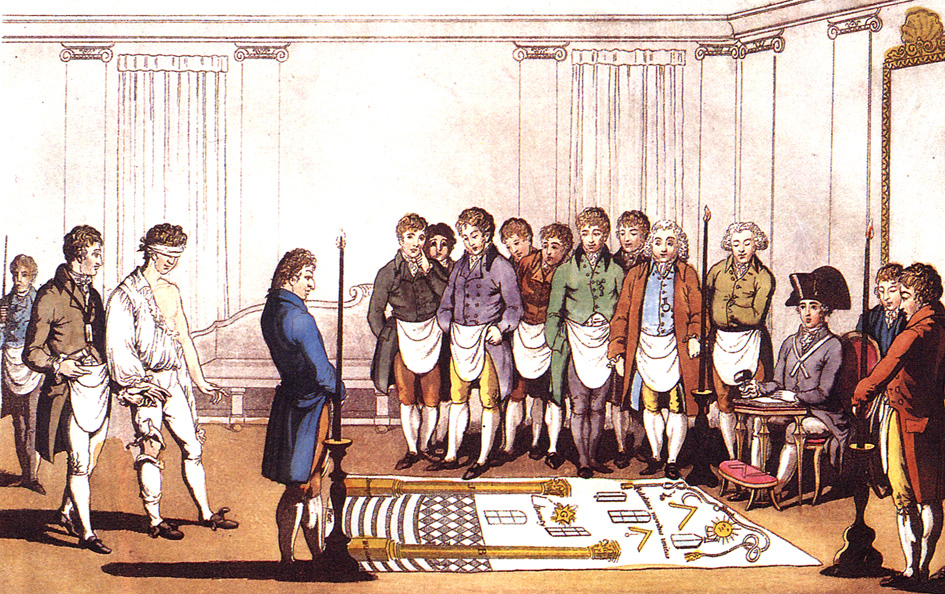|
Arioi
The Arioi or Areoi were a secret religious order of the Society Islands, particularly the island of Tahiti, with a hierarchical structure, esoteric salvation doctrine and cultish and cultural functions. They included both men and women of all social strata, though men predominated. The Arioi principally venerated the war god 'Oro, whom they considered the founder of their order. Polynesian society In order to understand the comparable societies on other islands of the Polynesian Triangle, it is necessary to understand Polynesian societal order in classical times, i.e. before Europeans made contact with islands. In most of Polynesia, society was divided and structured according to a strict hierarchy comprising several social strata. This division did not always manifest itself the same way, but it can be found in Tahiti, Samoa, Hawaii, the Marquesas Islands, Austral Islands, Cook Islands, and even in the remotest corner of the Polynesian Triangle on Easter Island. There were in ... [...More Info...] [...Related Items...] OR: [Wikipedia] [Google] [Baidu] |
Tahiti
Tahiti (; Tahitian language, Tahitian , ; ) is the largest island of the Windward Islands (Society Islands), Windward group of the Society Islands in French Polynesia, an overseas collectivity of France. It is located in the central part of the Pacific Ocean and the nearest major landmass is the North Island of New Zealand. The island was formed from Volcano, volcanic activity in two overlapping parts, ''Tahiti Nui'' (bigger, northwestern part) and ''Tahiti Iti'' (smaller, southeastern part); it is high and mountainous with surrounding coral reefs. Its population was 189,517 in 2017, making it by far the most populous island in French Polynesia and accounting for 68.7% of its total population; the 2022 Census recorded a population of 191,779. Tahiti is the economic, cultural, and political centre of French Polynesia. The capital of French Polynesia, Papeete, Papeete, is located on the northwest coast of Tahiti. The only international airport in the region, Faaʻa International ... [...More Info...] [...Related Items...] OR: [Wikipedia] [Google] [Baidu] |
Easter Island
Easter Island (, ; , ) is an island and special territory of Chile in the southeastern Pacific Ocean, at the southeasternmost point of the Polynesian Triangle in Oceania. The island is renowned for its nearly 1,000 extant monumental statues, called ''moai'', which were created by the early Rapa Nui people. In 1995, UNESCO named Easter Island a World Heritage Site, with much of the island protected within Rapa Nui National Park. Experts differ on when the island's Polynesian inhabitants first reached the island. While many in the research community cited evidence that they arrived around the year 800, a 2007 study provided compelling evidence suggesting their arrival was closer to 1200. The inhabitants created a thriving and industrious culture, as evidenced by the island's numerous enormous stone ''moai'' and other artifacts. Land clearing for cultivation and the introduction of the Polynesian rat led to gradual deforestation. By the time of European arrival in 1722, the i ... [...More Info...] [...Related Items...] OR: [Wikipedia] [Google] [Baidu] |
Tapa Cloth
Tapa cloth (or simply ''tapa'') is a barkcloth made in the islands of the Pacific Ocean, primarily in Tonga, Samoa and Fiji, but as far afield as Niue, Cook Islands, Futuna, Solomon Islands, Java, New Zealand, Vanuatu, Papua New Guinea and Hawaii (where it is called '' kapa''). In French Polynesia it has nearly disappeared, except for some villages in the Marquesas. In Melville's "Typee," the ship "Dolly" enters the harbor of Nukuheva where it is met by "swimming nymphs ... their adornments were completed by passing a few loose folds of white tappa, in a modest cincture, around the waist." (Typee, 1968: Evanston and Chicago, Northwestern University Press and the Newberry Library, pp. 14-15.) General The word tapa is from Tahiti and the Cook Islands, where Captain Cook was the first European to collect it and introduce it to the rest of the world. The cloth is also known by a number of local names, although the term ''tapa'' is international and understood throughout the isl ... [...More Info...] [...Related Items...] OR: [Wikipedia] [Google] [Baidu] |
Bast Fibre
Bast fibre (also called phloem fibre or skin fibre) is plant fibre collected from the phloem (the "inner bark", sometimes called "skin") or bast surrounding the stem of certain dicotyledonous plants. Some of the economically important bast fibres are obtained from herbs cultivated in agriculture, for instance flax, hemp, or ramie, but bast fibres from wild plants, such as stinging nettle, and trees such as Tilia, lime or linden, willow, oak, wisteria, and mulberry have also been used. Bast fibres are soft and flexible, as opposed to leaf fibres from monocotyledonous plants, which are hard and stiff. Since the valuable fibres are located in the phloem, they must often be separated from the woody core, the xylem, and sometimes also from the epidermis (botany), epidermis. The process for this is retting, and can be performed by micro-organisms either on land (nowadays the most important) or in water, or by chemicals (for instance high pH and chelating agents), or by pectinolytic enz ... [...More Info...] [...Related Items...] OR: [Wikipedia] [Google] [Baidu] |
Marae
A ' (in Māori language, New Zealand Māori, Cook Islands Māori, Tahitian language, Tahitian), ' (in Tongan language, Tongan), ' (in Marquesan language, Marquesan) or ' (in Samoan language, Samoan) is a communal or sacred place that serves religious and social purposes in Polynesian culture, Polynesian societies. In all these languages, the term also means cleared and free of weeds or trees. generally consist of an area of cleared land roughly rectangular (the itself), bordered with stones or wooden posts (called ' in Tahitian and Cook Islands Māori) perhaps with ' (terraces) which were traditionally used for ceremonial purposes; and in some cases, such as Easter Island, a central stone ' or ''a'u'' is placed. In the Easter Island Rapa Nui people, Rapa Nui culture, the term ''ahu'' or ''a'u'' has become a synonym for the whole marae complex. In some modern Polynesian societies, notably that of the Māori people, Māori of New Zealand, the marae is still a vital part of everyd ... [...More Info...] [...Related Items...] OR: [Wikipedia] [Google] [Baidu] |
Initiation
Initiation is a rite of passage marking entrance or acceptance into a group or society. It could also be a formal admission to adulthood in a community or one of its formal components. In an extended sense, it can also signify a transformation in which the initiate is 'reborn' into a new role. Examples of initiation ceremonies might include Christian baptism or confirmation, Jewish bar or bat mitzvah, acceptance into a fraternal organization, secret society or religious order, or graduation from school or recruit training. A person taking the initiation ceremony in traditional rites, such as those depicted in these pictures, is called an ''initiate''. Characteristics William Ian Miller notes the role of ritual humiliation in comic ordering and testing. Mircea Eliade discussed initiation as a principal religious act by classical or traditional societies. He defined initiation as "a basic change in existential condition", which liberates man from profane time and histor ... [...More Info...] [...Related Items...] OR: [Wikipedia] [Google] [Baidu] |
Caste System In India
The caste system in India is the paradigmatic ethnographic instance of social classification based on castes. It has its origins in ancient India, and was transformed by various ruling elites in medieval, early-modern, and modern India, especially in the aftermath of the collapse of the Mughal Empire and the establishment of the British Raj. Beginning in ancient India, the caste system was originally centered around '' varna'', with ''Brahmins'' (priests) and, to a lesser extent, ''Kshatriyas'' (rulers and warriors) serving as the elite classes, followed by '' Vaishyas'' (traders, merchants, and farmers) and finally '' Shudras'' (labourers). Outside of this system are the oppressed, marginalised, and persecuted '' Dalits'' (also known as " Untouchables") and '' Adivasis'' (tribals). Over time, the system became increasingly rigid, and the emergence of '' jati'' led to further entrenchment, introducing thousands of new castes and sub-castes. With the arrival of Islamic rule, ... [...More Info...] [...Related Items...] OR: [Wikipedia] [Google] [Baidu] |
Feudalism
Feudalism, also known as the feudal system, was a combination of legal, economic, military, cultural, and political customs that flourished in Middle Ages, medieval Europe from the 9th to 15th centuries. Broadly defined, it was a way of structuring society around relationships derived from the holding of land in exchange for service or labour. The classic definition, by François Louis Ganshof (1944),François Louis Ganshof (1944). ''Qu'est-ce que la féodalité''. Translated into English by Philip Grierson as ''Feudalism'', with a foreword by F. M. Stenton, 1st ed.: New York and London, 1952; 2nd ed: 1961; 3rd ed.: 1976. describes a set of reciprocal legal and Medieval warfare, military obligations of the warrior nobility and revolved around the key concepts of lords, vassals, and fiefs. A broader definition, as described by Marc Bloch (1939), includes not only the obligations of the warrior nobility but the obligations of all three estates of the realm: the nobility, the cl ... [...More Info...] [...Related Items...] OR: [Wikipedia] [Google] [Baidu] |
Serfs
Serfdom was the status of many peasants under feudalism, specifically relating to manorialism and similar systems. It was a condition of debt bondage and indentured servitude with similarities to and differences from slavery. It developed during late antiquity and the Early Middle Ages in Europe and lasted in some countries until the mid-19th century. Unlike slaves, serfs could not be bought, sold, or traded individually, though they could, depending on the area, be sold together with land. Actual slaves, such as the kholops in Russia, could, by contrast, be traded like regular slaves, abused with no rights over their own bodies, could not leave the land they were bound to, and marry only with their lord's permission. Serfs who occupied a plot of land were required to work for the lord of the manor who owned that land. In return, they were entitled to protection, justice, and the right to cultivate certain fields within the manor to maintain their own subsistence. Serfs were ... [...More Info...] [...Related Items...] OR: [Wikipedia] [Google] [Baidu] |
Tattoo
A tattoo is a form of body modification made by inserting tattoo ink, dyes, or pigments, either indelible or temporary, into the dermis layer of the skin to form a design. Tattoo artists create these designs using several tattooing processes and techniques, including hand-tapped traditional tattoos and modern tattoo machines. The history of tattooing goes back to Neolithic times, practiced across the globe by many cultures, and the symbolism and impact of tattoos varies in different places and cultures. Tattoos may be decorative (with no specific meaning), symbolic (with a specific meaning to the wearer), pictorial (a depiction of a specific person or item), or textual (words or pictographs from written languages). Many tattoos serve as rites of passage, marks of status and rank, symbols of religious and spiritual devotion, decorations for bravery, marks of fertility, pledges of love, amulets and talismans, protection, and as punishment, like the marks of outcasts, slaves, ... [...More Info...] [...Related Items...] OR: [Wikipedia] [Google] [Baidu] |






